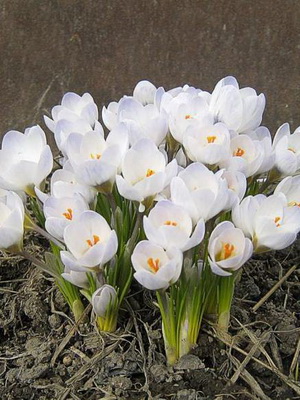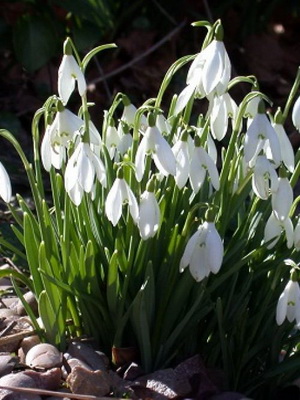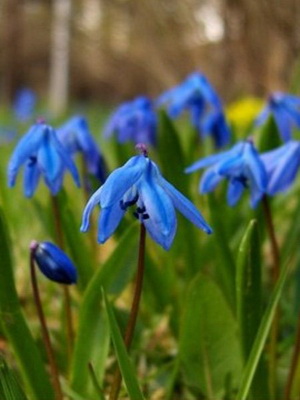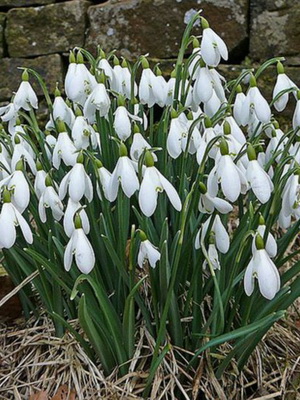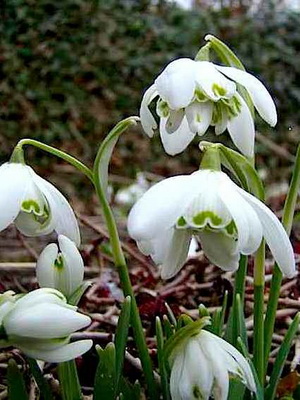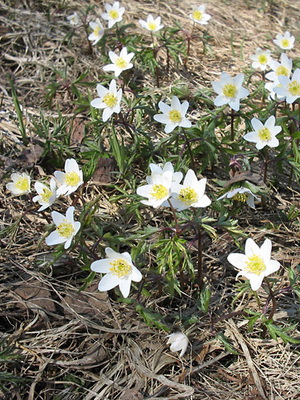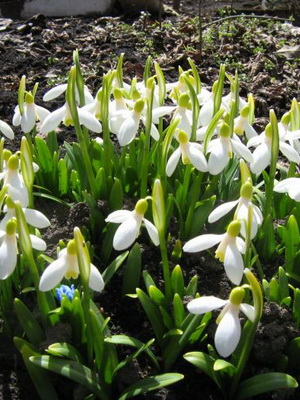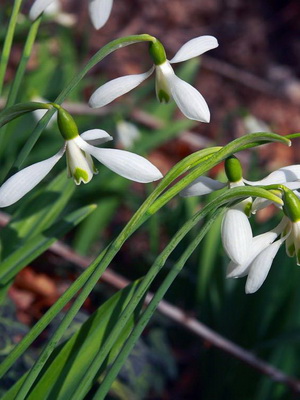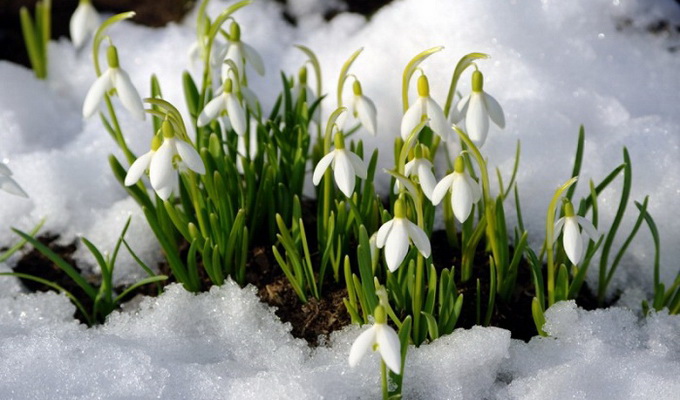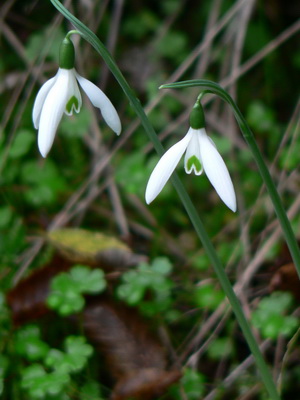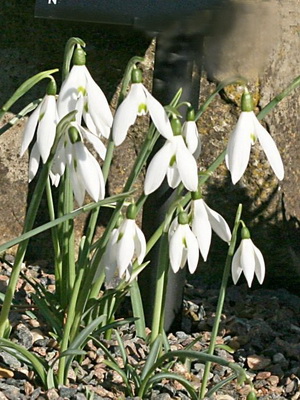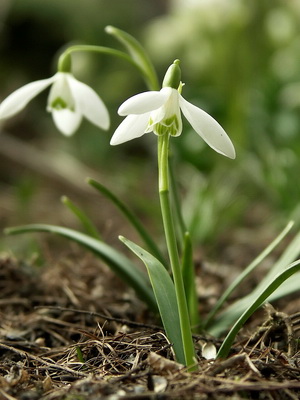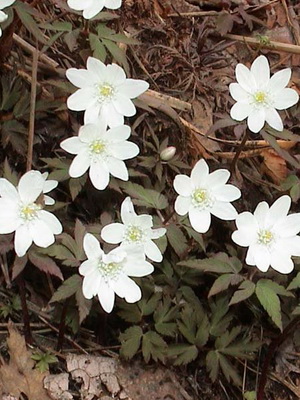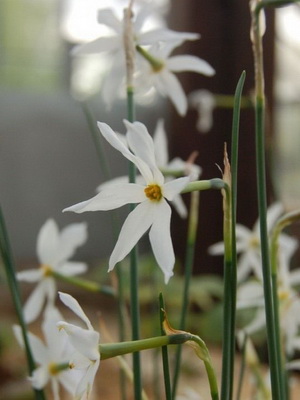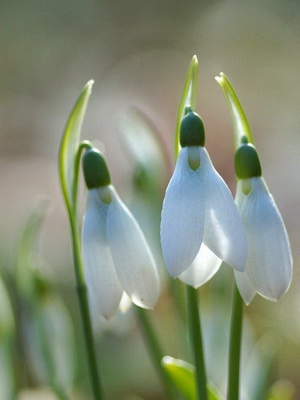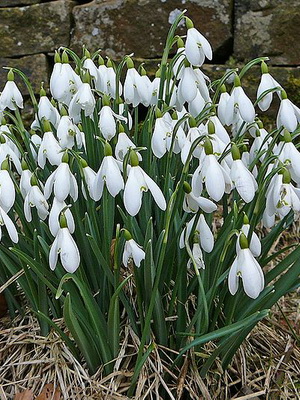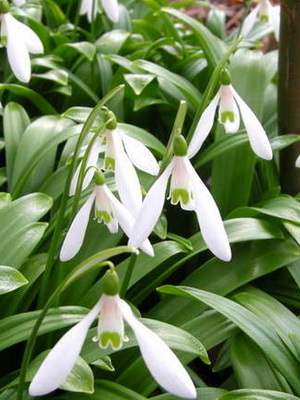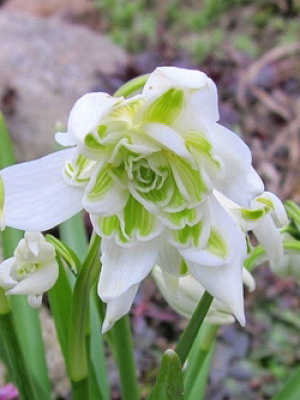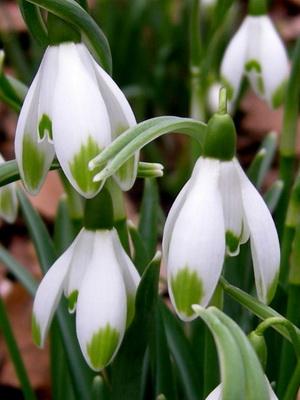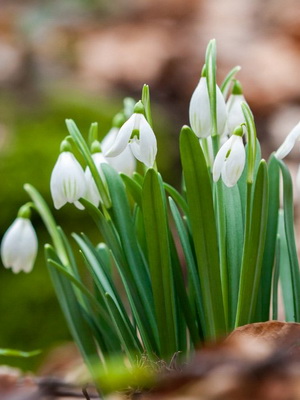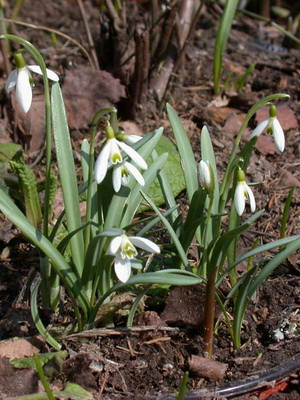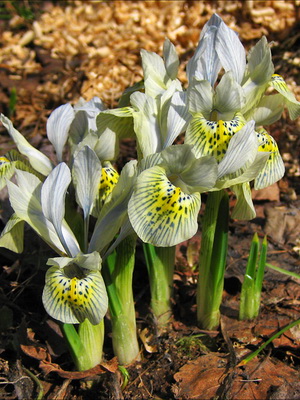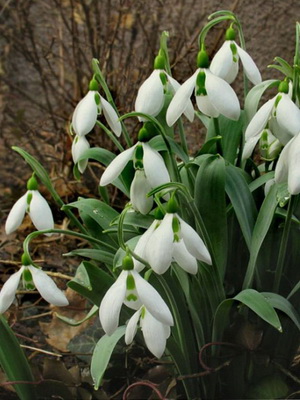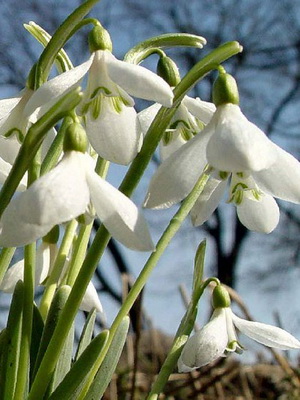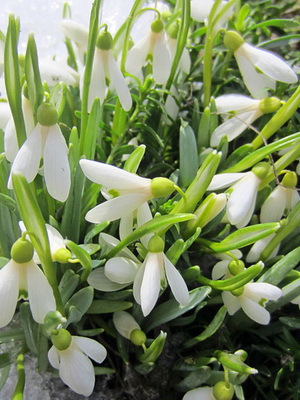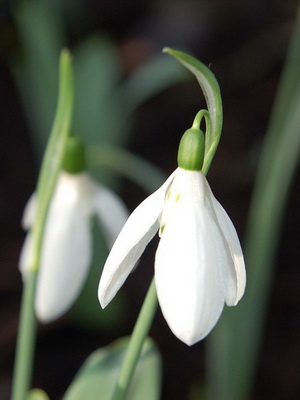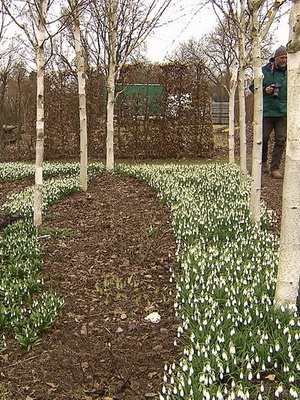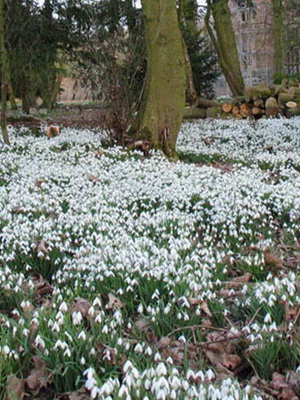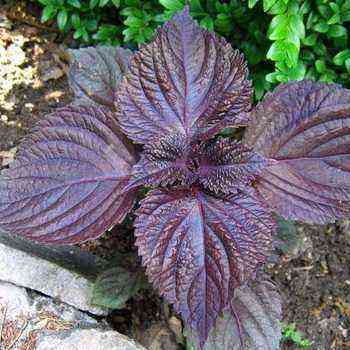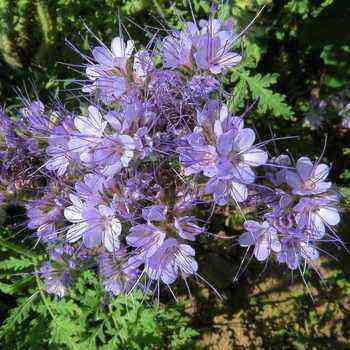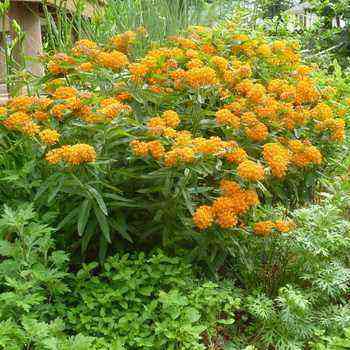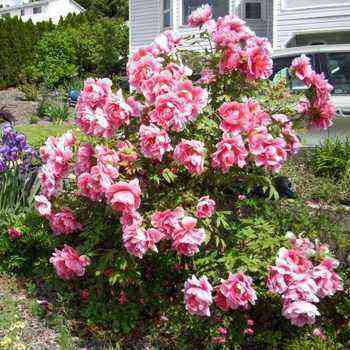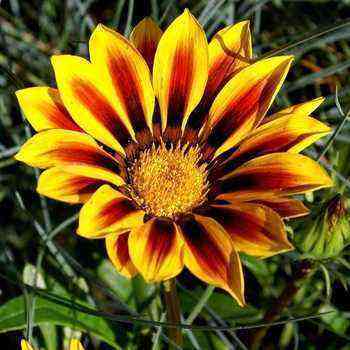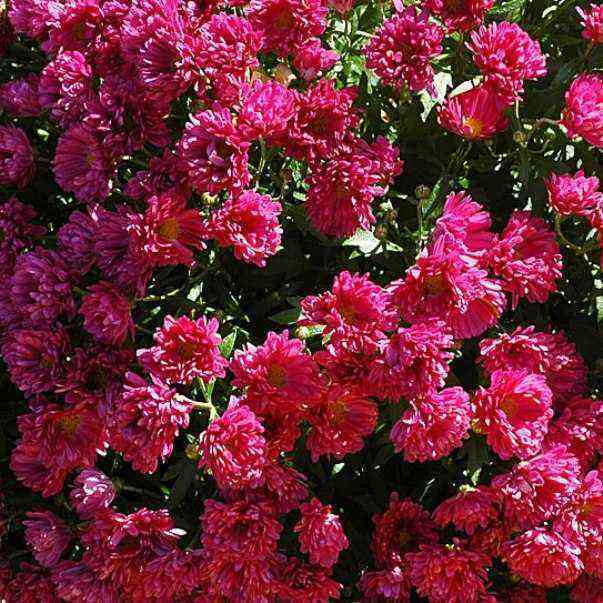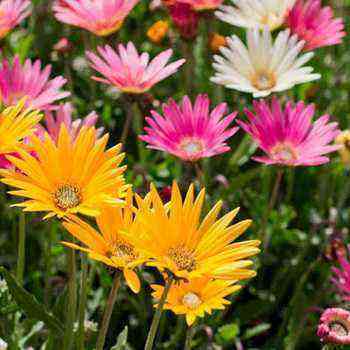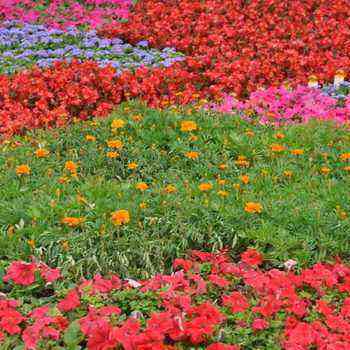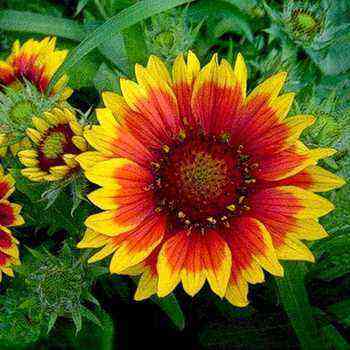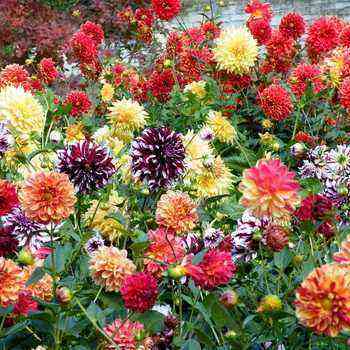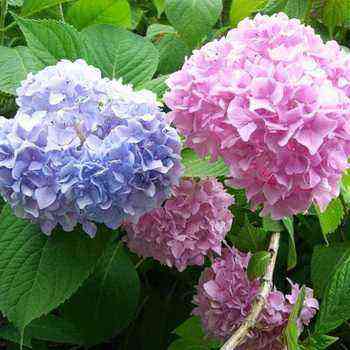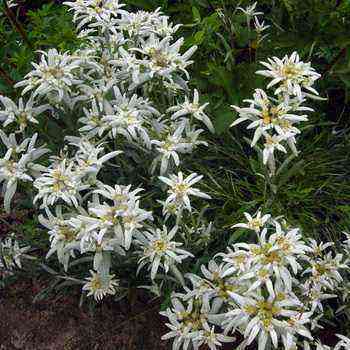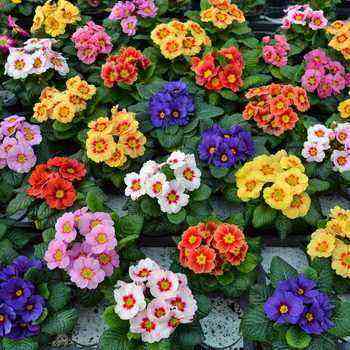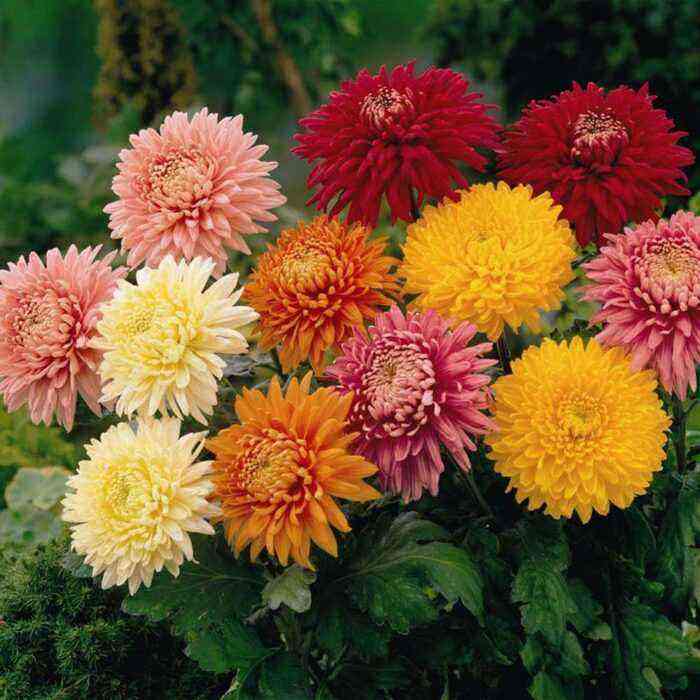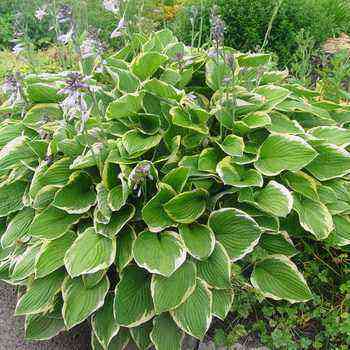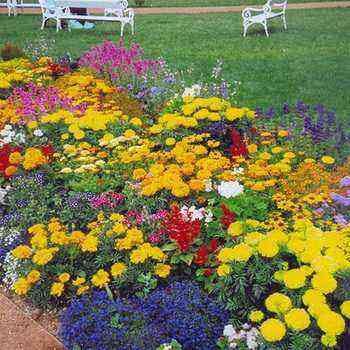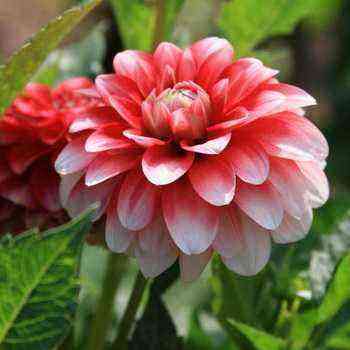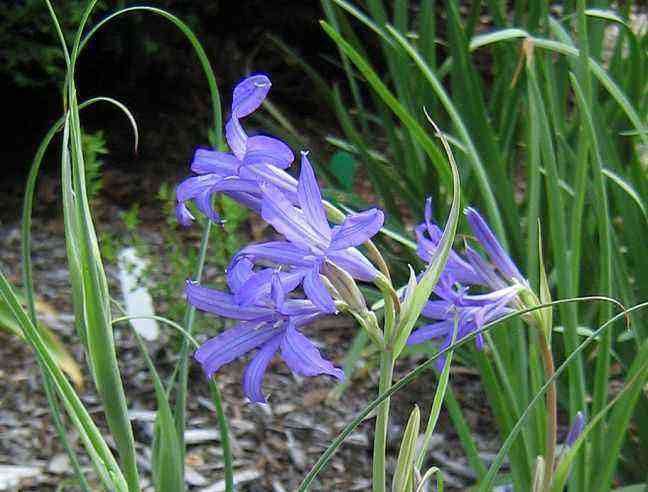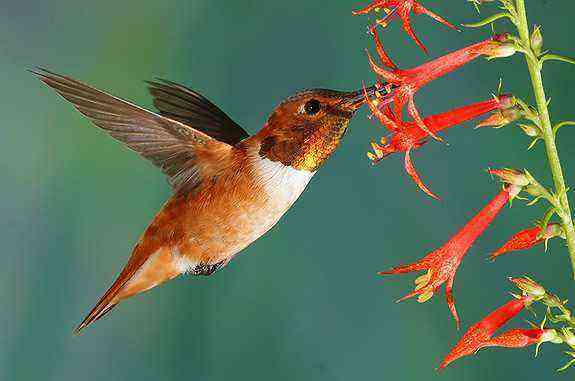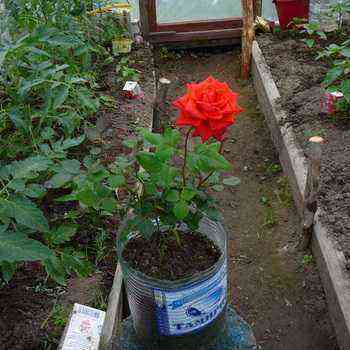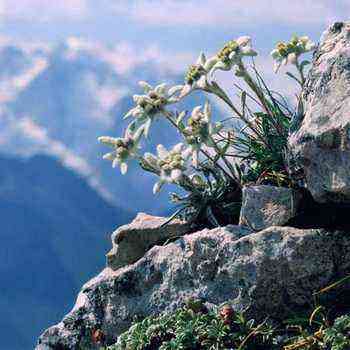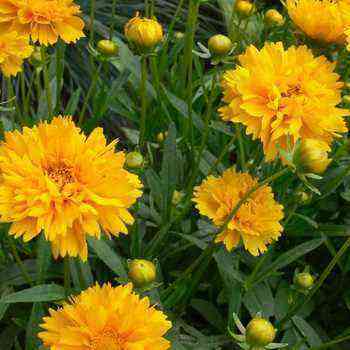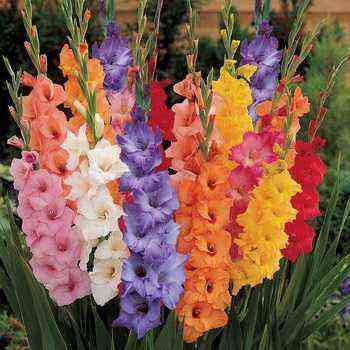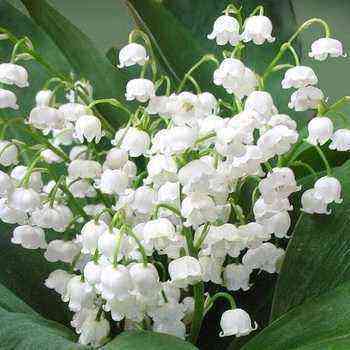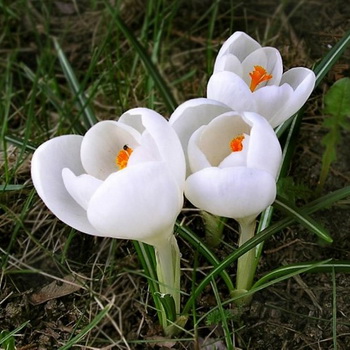
In addition to aesthetic pleasure, Galanthus flowers give people the opportunity to treat certain diseases. They received such properties due to the presence in their composition of the substance galantamide, which has a beneficial effect on the nerve cells of the human spinal cord and brain. So, Galanthuses are able to treat people from muscle pathology, inflammation of the joints, diseases of the central nervous system. It is strictly forbidden to exceed the recommended doses, since the plant is poisonous.
Galanthus is often used to treat fungal skin diseases as part of an alcoholic tincture. A decoction from this plant is taken for radiculitis, cerebral palsy and cancer.
Galanthus is a delicate fragile flower associated with the beginning of spring and new life. He is able to give women joy, create coziness in the home garden, and also heal for some diseases. This is a flower that is considered a symbol not only of spring, but also of hope.
What colors are snowdrops and what do garden galanthuses look like (with photo)
As soon as the snow cover gradually begins to melt, and nature gradually emerges from hibernation, snowdrops appear – the first flowers of the world and spring, which make us rejoice in the present, look towards the future with a smile and forget all the failures in the past. They grow on the edges of forests in sunny places, and at night they bend the peduncle and hide it under the snow. There are about twenty species of Galanthus, and, in all honesty, at first glance, they are all almost the same: three outer petals in a boat, three inner petals in a tube, green spots on the tube. It is this structure of the petals that gives the galanthus the shape of an elegant bell. The leaves are also similar, differing in shades, sizes, and how they are folded in the bud (the characteristic that determines the type). This is an external description of almost any snowdrop flower, which makes it clear to a person,
And these seemingly identical plants at some point became the object of British selection. And now there are an unimaginable number of varieties, most of which are just as subtle. But there are also recognizable, unusual cultivars: terry and with green spots on the outer petals. All this beauty is for those who love to kneel down and look at the flower. To more accurately understand how different types of snowdrops look, you can look at the photo:
What kind of snowdrops are, based on the conditions in which they live. Firstly, there are flowers that grow independently in nature, and there are those that are suitable for a garden and are grown by humans. So, there are forest and garden galanthuses.
Secondly, each type of galanthus tolerates subzero temperatures differently. Despite the external similarity, snowdrops still differ in their winter hardiness.
The most stable in our country can be considered snowdrop snowdrop (Calanthus nivalis) , folded snowdrop (C. plicathus) , Caucasian snowdrop (C. caucasucus) . They can withstand even snowless frosts, reproduce well vegetatively, form viable seeds and even self-seeding. Most of the other species are also suitable for cultivation, but require additional testing.
Thirdly, snowdrops differ in flowering time, most of them bloom in early spring.
However, there is an exception – Queen Olga’s snowdrop (C. reginae-olgae) . This miracle blooms in late autumn or on New Year’s Eve, like in a fairy tale! The only pity is that this species from warm countries either does not have time to bloom in our country, or freezes in winter. The longest flowering period is 30 days.
Fourthly, everyone could ask himself the question, what colors are the flowers of snowdrops. Surely, many people know about the existence of blue galanthus. But in fact, this is a misconception, since this plant is called a scilla (or forest) and belongs to a completely different genus of snowdrops. All representatives of Galanthus have white petals, but the color of the leaves and spots inside the flower may differ. Basically, the main difference between these flowers is their height and leaf shape.
Even Galanthuses, similar at first glance, have their own homeland, history of origin, different heights and structure of leaves. Moreover, each type of flower perceives frost differently and has its own flowering period. How different snowdrops are can be seen in the photo:
Popular types and varieties of snowdrops: photos, names and descriptions
The genus Calanthus carries 18 types of flowers, most of which are of interest to gardeners. The most popular types of snowdrops flowers today are three:
- snow-white galanthuses. They bloom in early spring faster than the rest of their relatives, and bloom for about 30 days. In total, there are 50 varieties of them. Plants of this species have a height of 7-12 cm, the flowers are white, with a yellow spot inside and a delicate aroma. This type is the most famous and widespread;
- snow galanthuses. They grow in the forests of Europe and bloom towards the end of March, their height reaches 15 cm, the leaves are gray, up to 1 cm wide and up to 10 cm long. The flower itself is white and has a cut, as well as a green spot inside;
- Galanthuses of Elves. They got this name thanks to the English botanist John Elvis – this species grows in Asia Minor and begins to bloom by mid-March. They are the larger representatives of Galanthus, since their height reaches 30 cm. The leaves have acquired a blue hue, and their width reaches 2 cm. The flowers, however, have a larger and spherical shape.
You can more clearly see these three types of snowdrops from the photo. They are all beautiful and similar to each other in the bell-shaped flower shape.
Snowdrops of other species exist in nature, and they also have their own names: folded, narrow-leaved, Caucasian, broad-leaved and many others. They all grow in different parts of the planet and differ mainly in the shape and color of their leaves. In total, there are at least 16 species of galanthus. Many of them are listed in the Red Book. In the photo you can see most of the species of snowdrops and read their names.
The most popular species of primroses have their hybrid plants. Today, about 120 varieties of Galanthus are known. They differ in the color of the lower petals and in their growing season. But certain varieties of snowdrop plants still have distinctive features.
For example, the types Flore Pleno, Ophelia, Pusi Green grow with double petals.
The Atkensi variety grows best in gardens and thrives on any terrain.
Viridapis, Lutescens have small spots on their white petals of different colors. You can get acquainted with the varieties of snowdrops in more detail by looking at the photo:
How to plant snowdrops and how to grow them: rules for planting and care in the open field
Planting snowdrops does not require special skills from the gardener, and caring for them is not difficult. This plant adapts to almost any soil, but it is better to drain the soil before planting. It is important to work with gloves, as the plant bulbs are poisonous. Although Galanthus fades by early June, they do not spoil the general appearance of the flower garden, especially if they can be planted near tulips, daffodils, and so on.
Garden flowers snowdrops are extremely good in planting in clumps, groups. Primroses are well tolerated by temperature and weather extremes. Their place in nature is the wet terraces of rivers and the slopes of mountain streams under the forest canopy. And in the garden, Galanthus is ideal for forest areas with clay, fairly moist soil. They are ephemeroids, their foliage dies off quickly, so it is convenient to plant them among large perennials like host. Only the earliest flowers can be blooming partners, for example, hellebores, Tubergen’s blueberry, or Mishchenko. A photo of garden varieties of snowdrops perfectly reflects their unpretentiousness and beauty.
Most often, galanthus is used as a decoration for rock gardens and lawns. They look great as a flower bed element next to primroses. Flowers can be carefully cut and placed in a vase in the house so that they delight with their freshness and beauty. For a long-lasting fragrance of Galanthus, you can add ice to the water.
On the land for planting snowdrop bulbs, special attention is often paid to the composition of the soil. In addition, planting in low-lying areas and in shady areas negatively affects the viability of Galanthus. They like open spaces, but it is preferable to avoid direct sunlight. Rockeries, which create the necessary illumination for delicate galanthuses, will be a great place. Heavy clay soils are absolutely unacceptable here.
For simple care of snowdrops and their cultivation, it is better to use fertilizers. Compost and humus are best suited, but complex mineral fertilizers are preferable. It is advisable to fertilize with mixtures specifically for bulbous plants; the use of fresh manure is not recommended here.
To remember how easy it is to grow snowdrops, you need to adhere to just a few rules:
- Galanthus should not be planted in low and dry areas;
- it is possible to transplant and divide clumps of snowdrops at almost any time until October, even in bloom. However, in the latter case, the bulbs are depleted, and do not expect flowering next year. The optimal transplant time is summer, a dormant period. Planting depth – standard;
- do not prune the plant before the end of its growing season, as the new bulb will not take root. Leaves also cannot be cut off until they are completely dry;
- in spring, flowers need abundant watering;
- in winter, galanthuses must be covered with peat or humus, but such an overlap should not be too heavy.
These rules will tell you how to properly care for snowdrops so that their flowering is a minimum of hassle and maximum pleasure.
How to care for snowdrops and how to propagate them
You need to be attentive to harmful insects and prevent their appearance by scaring off the smell. Galanthuses are very persistent creatures, and they do not care for most diseases and pests. But they have a family pest of amaryllis, to which they belong: the daffodil fly. Yes, it harms not only daffodils, but also snowdrops, eating away the insides of the bulb and the bottom. If the snowdrops have already multiplied, then the presence of the pest worsens flowering, because bulbs recover over time, but damaged ones do not bloom. In this case, it is better to treat the plant with an insecticide.
How to plant snowdrops correctly if you go to propagate these plants, and what methods are there? Most often, planting is carried out by propagating the bulbs (vegetative method) or by purchasing seeds from the store (seed method). Most gardeners are engaged in planting two types of this plant – this is snow-white and Elwes galanthus.
At the end of summer, Galanthus are at rest, it is this time that is optimal for the reproduction of snowdrop bulbs. The mother’s bulb is dug up, young formations are separated from it, which cannot tolerate a lack of water. Based on this, young bulbs are planted on the same day, but they do not dry out. In the open field, for planting a snowdrop, it is necessary to make a depth equal to three heights of the bulb, and then caring for new galanthuses will only be a joy. The bulb itself has a diameter of about 3 cm, and the distance between planting plants is at least 10 cm. It will not hurt to put humus or ash on the bottom.
Snowdrops can also be propagated with fresh seeds, which are sown before winter. They are sown immediately after the collection has taken place, the depth depends on the composition of the soil and on average is 1-2 cm. A very important point here is the composition of the soil. If it is heavy, then it is best to sow to a depth of no more than 1 cm, if the soil is loose, then the seeds are lowered 2 cm down. Seeds often germinate well, but this method is lengthy and rarely used. Plants begin to bloom no earlier than 3 years later. In shady places, Galanthus has the ability to reproduce by self-seeding, so the question of how snowdrops can be propagated is solved by itself.
